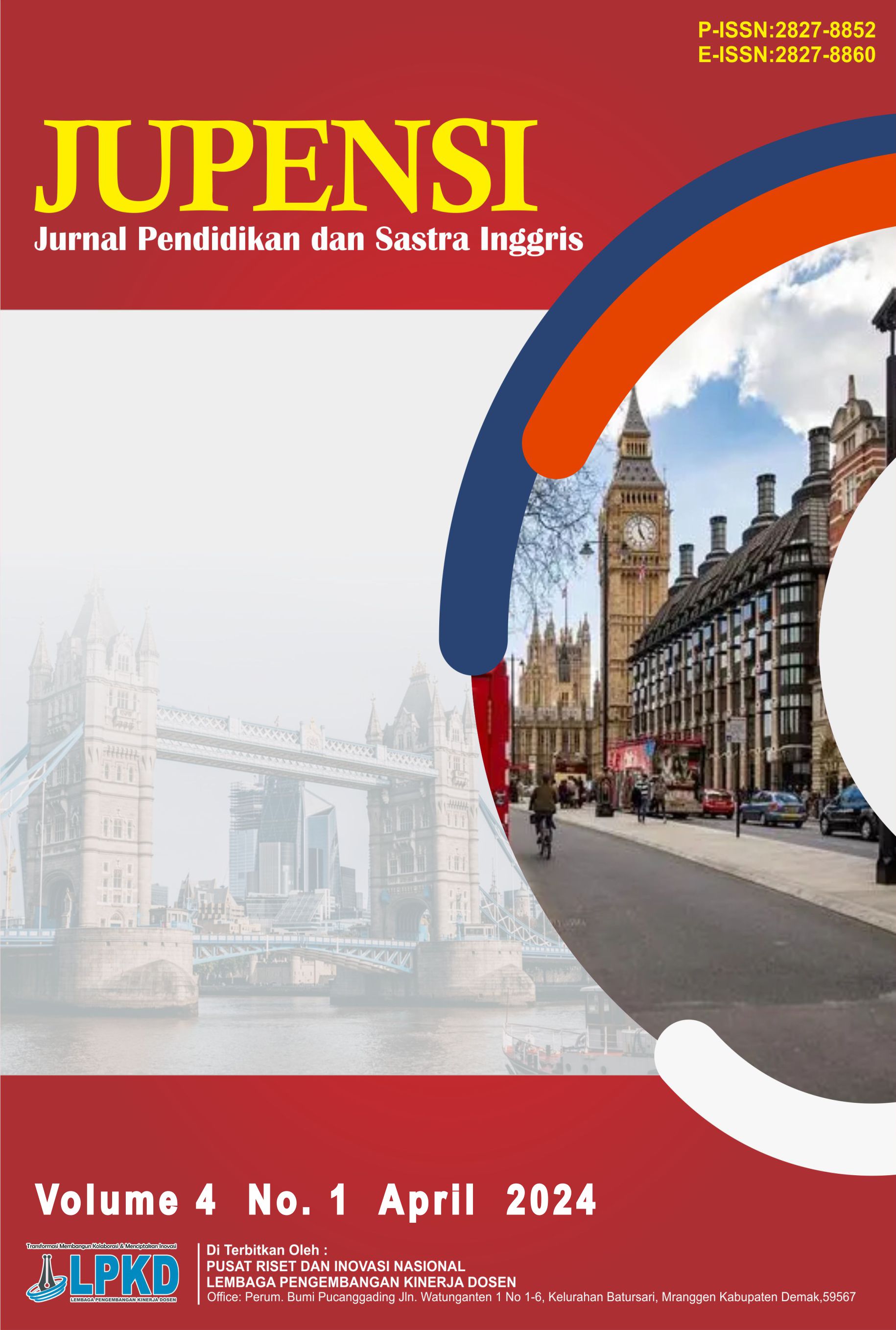A Psychoanalytic Analysis of Obsession for Perfection and Psychological Unravelling in Black Swan (2010)
DOI:
https://doi.org/10.55606/jupensi.v4i1.3338Keywords:
black swan, hallucination, obsession, psychoanalytic, unconsciousAbstract
Black Swan (2010) is a psychological horror movie that explores themes of ambition, perfectionism, and the psychological toll of obsession in the competitive world of professional ballet. The movie delves into Nina's descent into madness as she strives for artistic perfection, blurring the lines between reality and hallucination. The aim achieved in this analysis includes examining how psychological stress manifests itself, how high-pressure artistic circumstances can distort reality, and how these factors influence the protagonist's spiral toward mental instability. This is qualitative-descriptive research. The researchers follow a four-step process involving data identification, classification, analysis, and concluding. The main data collection comes from Black Swan (2010), focusing on scenes when Nina Sayers experiences mental breakdowns. The researchers collected data from the film itself and several journals, focusing on Nina's mental disorders and applying Freudian concepts to analyze her behavior and personality. The research results show that obsession and strong demands for perfection from herself and others have disturbed Nina's mental instability in Black Swan (2010).
Downloads
References
American Association for Psychoanalysis in Clinical Social Work. (2016). The Portrayal of Black Swan Through a Multicontexual Framework. https://aapp.org/perspective/2016/07/309618
American Psychiatric Association. (2013). Diagnostic and statistical manual of mental disorders (5th ed.). https://doi.org/10.1176/appi.books.9780890425596
American Psychiatric Association. (2014). Reading Deficits in Schizophrenia and Individuals at High Clinical Risk: Relationship to Sensory Function, Course of Illness, and Psychosocial Outcome. https://doi.org/10.1176/appi.ajp.2014.13091196
American Psychiatric Association. (2020). Increases in Depression, Self‐Harm, and Suicide Among U.S. Adolescents After 2012 and Links to Technology Use: Possible Mechanisms. https://doi.org/10.1176/appi.prcp.20190015
Blankspace2302. (2018). Freudian Psychoanalysis in Black Swan. http://blankspace2302.blogspot.com/2018/11/freudian-psychoanalysis-in-black-swan.html?m=1
Erinlorentzen. (2012). The Psyche of the Swan: The Id, Ego, and Superego. https://visualrhetoricspring2012.wordpress.com/2012/04/16/the-psyche-of-the-swan-the-id-ego-and-superego/
Hatyanti, A. P., & Murtiningrum, A. (2022). NINA'S NEUROTIC AND REALISTIC ANXIETY REPRESENT IN THE BLACK SWAN MOVIE (2010). Jurnal Ilmiah Sultan Agung, 1(1), 908-915. Retrieved from https://jurnal.unissula.ac.id/index.php/JIMU/article/view/26825/7424
Lumbanraja, A., Sembiring, M., & Sembiring, E. M. (2021). DELUSION OF THE MAIN CHARACTER IN “THE BLACK SWAN” MOVIE. METHOLANGUE: Language Teaching and Literature, Linguistics and Literature, 6(2), 12-23. Retrieved from https://ejurnal.methodist.ac.id/index.php/metholangue/article/view/1276/1010
Malpas, S., & Wake, P. (2013). Critical and Cultural Theory (2nd ed.) Routledge.
Nastiti, A. E. Y., & Sutandio, A. (2023). THE PORTRAYAL OF THE FEMALE PROTAGONIST IN DARREN ARONOFSKY’S BLACK SWAN USING FREUD’S PSYCHOANALYTIC THEORY OF PERSONALITY AND DEFENSE MECHANISMS. Capture: Jurnal Seni Media Rekam, 14(2), 92-106. https://doi.org/10.33153/capture.v14i2.4993
National Eating Disorders Association. (n.d.). Anorexia Nervosa https://www.nationaleatingdisorders.org/learn/by-eating-disorder/anorexia
National Institute of Mental Health. (2016). Obsessive-compulsive disorder. https://www.nimh.nih.gov/health/topics/obsessive-compulsive-disorder-ocd/index.shtml
Paris, G. (2017). Freudian Theory and Black Swan: Psyche and Duality.Academia.edu. https://www.academia.edu/39365394/Freudian_Theory_and_Black_Swan_Psyche_and_Duality
PCH Treatment Center. (n.d.). The Black Swan Movie and Psychological Illness. https://www.pchtreatment.com/the-black-swan-movie-and-psychological-illness/
Rasool, Samma faiz. (2021). How Toxic Workplace Environment Effects the Employee Engagement: The Mediating Role of Organizational Support and Employee Wellbeing. https://doi.org/10.3390/ijerph18052294
Spaces Quarterly. (n.d.). Black Swan: Fantasy or Reality? https://www.spacesquarterly.com/blog/an-analysis-of-black-swan
Study Smarter. (2020). Psychoanalytic Literary Criticism. https://www.studysmarter.co.uk/explanations/english-literature/literary-criticism-and-theory/psychoanalytic-literary-criticism/
Tyson, L. (2012). Critical Theory Today a user-friendly guide (3rd ed.). Routledge.
Utami, M. P. (2022). ANXIETY DISORDER PORTRAYED BY NINA SAYER AS THE MAIN FEMALE CHARACTER IN ARONOFSKY’S BLACK SWAN MOVIE (Doctoral dissertation, Diponegoro University). Retrieved from https://eprints2.undip.ac.id/id/eprint/15660/1/FINAL%20SKRIPSI_MEILYA%20PUSPARINI%20UTAMI.pdf
Downloads
Published
How to Cite
Issue
Section
License
Copyright (c) 2023 Jurnal Pendidikan dan Sastra Inggris

This work is licensed under a Creative Commons Attribution-NonCommercial-ShareAlike 4.0 International License.









